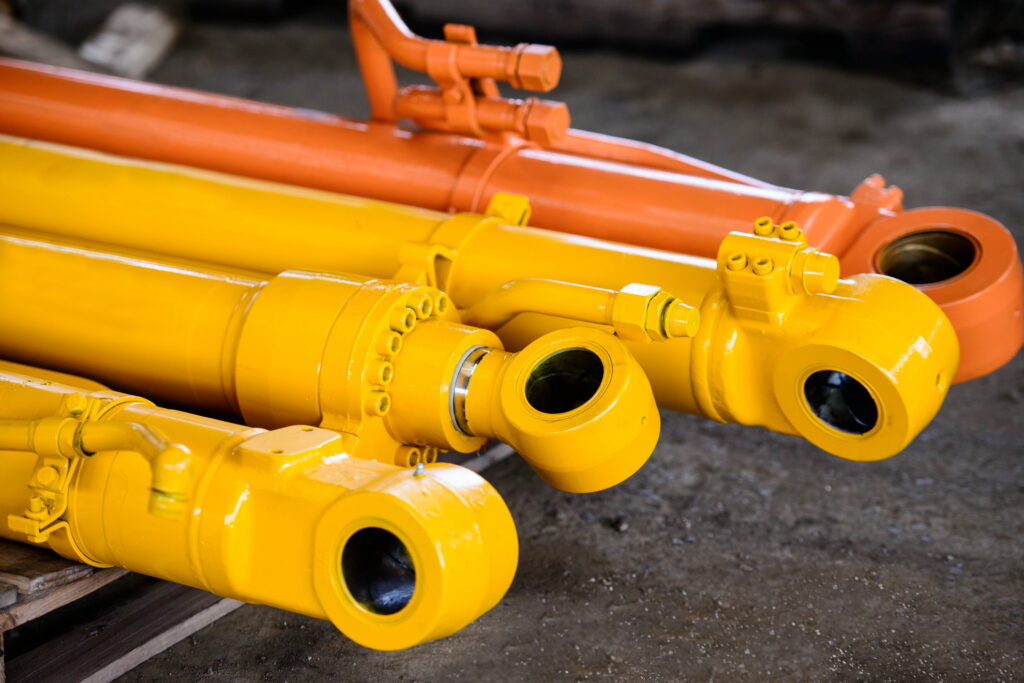Many of the components that make up an excavator tend to grab the attention of observers: the massive tracks, the long arm and bucket attachments, the enormous counterweight at the rear. But there are less glamorous parts that play an equally important role in enabling an excavator to do its job well – one of which is the hydraulic cylinders.
Hydraulic cylinders generate the force and precise movements that make excavators so effective and versatile. They translate hydraulic pressure into mechanical action, allowing the countless motions of parts like the boom, dipper stick, bucket and swing cylinders. Whether buyers are looking for new excavator hydraulic cylinder for sale or excavator hydraulic cylinder repair kits, understanding how these components work reveals their value.

How Hydraulic Cylinders Work in Excavators
Excavator hydraulic cylinders contain a piston that is pushed or pulled by the hydraulic fluid. When fluid enters one side of the cylinder, the piston rod extends. Fluid entering the other side causes the piston rod to retract. The extension or retraction of the piston rod moves whatever part the cylinder is attached to.
Hydraulic cylinders provide consistent pulling force regardless of the speed of extension or retraction. This makes them ideal for the heavy loads and precise movements required in excavator attachments. The fluid-powered cylinders also enable hydraulic brake systems to stop and hold the attachments in place when needed.
Types of Hydraulic Cylinders in Excavators
There are several different types of hydraulic cylinders within an excavator, categorized by where they are located and what function they serve:
- Vérins de flèche – Located on the boom arms, these cylinders control the upward and downward movements of the excavator’s arm. Defects in boom cylinders lead to instability and uneven bucket movements.
- Dipper Stick Cylinders – Connected to the dipper stick or extension arm beyond the boom, these cylinders control digging depth. Worn dipper stick cylinders can cause jerky motions and depth inaccuracy.
- Vérins de godet – Attached to the bucket, bucket cylinders control opening and closing of the bucket to grab, hold and release material. Issues with bucket cylinders lead to bucket dumping unexpectedly or inability to fully close.
- Swing Cylinders – Located at the base of the upper structure, swing cylinders rotate the upper body or “house” of the excavator. When these cylinders fail, smooth digging motions become difficult or impossible.
Hydraulic Cylinder Assembly Parts
The major components of an excavator hydraulic cylinder include:
- The tube: This forms the chamber that encases the rod and hydraulic fluid.
- The rod gland: This seals the interstice between the rod and cylinder tube to avert fluid escape.
- The piston: This is fastened to the rod within the cylinder tube and moves as the rod expands and contracts.
- The pressure ports: These are where hydraulic hoses connect to permit fluid into and out of the cylinder.
- The mounting brackets: These fasten the cylinder to the excavator components it administers.
- The rod: This constitutes the operative part of the cylinder that protrudes when hydraulic fluid enters one side of the cylinder.
All of these parts must work seamlessly together and withstand high loads, impact, vibrations and abrasion for the hydraulic cylinder to function properly and extend service life. Keeping cylinders maintained, with regular changes of seals and rod wipers, is essential. Looking for reliable aftermarket replacement excavator hydraulic cylinders can extend equipment uptime and profitability.
